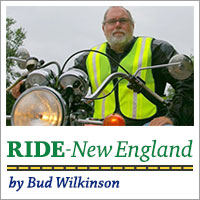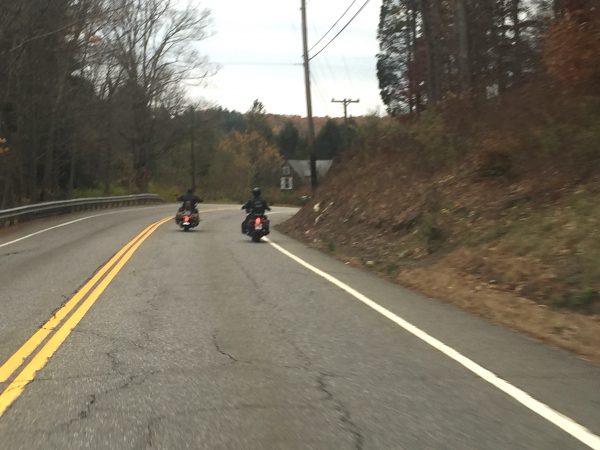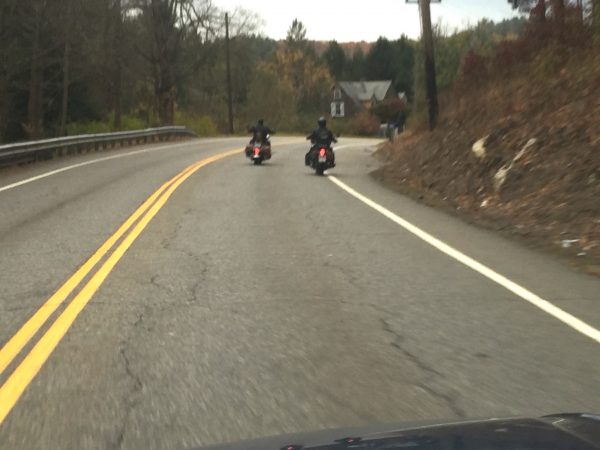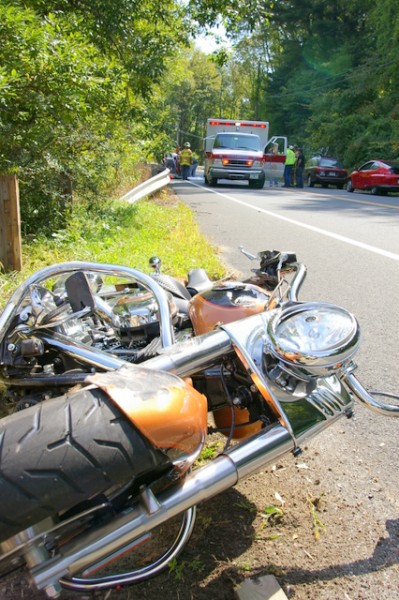The life of any motorcyclist can be snuffed in an instant. All it takes is for a distracted, unobservant or impaired driver to cross the center line or make an improper turn across the path of an oncoming rider. In just seconds, a rider can go from enjoying the wind to being a  lifeless body on the pavement.
lifeless body on the pavement.
What happened more than two weeks ago in Litchfield to a group of 18 riders who were on a fall foliage excursion is unspeakable, intolerable and so sad. Lives changed forever in an instant. One person died, six others were injured in a car-into-motorcycles accident. The fatality was a 33-year-old mother of three from Harwinton.
Pictures showed the carnage on Route 63 – mangled motorcycles and a roadway strewn with debris. Two boots belonging to one of the riders rested in the wreckage. State police are still investigating. The driver of the Ford Escape that ran down the pack told investigators that she veered into their lane to avoid a motorcycle that was coming at her.
Predictably, social media erupted with well-meaning posts of sympathy as well as finger-pointing at the driver and demands that she “gets the book thrown at her.” Having lost a dear friend and riding buddy four years ago when a driver pulled out in front of him, I understand the outrage. The pictures of the recent accident brought back memories of how my friend went down before my eyes. Time hasn’t erased them.
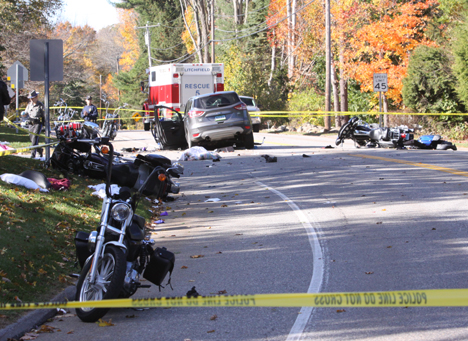
What also outrages me, though, is the unwillingness of so many riders to accept full responsibility for what is a risky form of recreation. Generally speaking, too many riders refuse to wear adequate protective gear and too many don’t wear full-face helmets.
Many do nothing to ensure that their riding skills are finely-tuned by taking refresher/experienced rider courses. And many don’t employ riding strategies designed to minimize the risk. Their belief that “I’ve been riding for years” is a sufficient safeguard. It’s not. It’s a lame excuse.
Last weekend, heading west and down the hill on Route 118 in Harwinton, I got behind two riders on baggers. They were riding in a staggered formation but were too close together. Had a squirrel run out on the roadway, for instance, the lead rider would likely have swerved and applied the brakes. The trailing rider would have had no time to react and could have easily crashed into his riding partner.
How often is it that we see a pack of riders on cumbersome cruisers moving in a tight formation, especially on the innumerable charity rides that take place every year? Too often. What’s truly amazing is that tragedies like what happened in Litchfield don’t occur regularly. It’s so much easier to take out bikes that are tightly arranged like bowling pins than it is to decimate a group that is widely spread out.
“One-thousand-one, one-thousand-two, one-thousand-three.” It’s a line that I use on every ride. When behind any vehicle, I pick a point along the road and when the vehicle ahead passes it, I mouth the words. If I get to the selected spot before I reach “one-thousand-three,” I roll off the throttle. This ensures that I have enough time and space to react if something unexpected happens ahead – to either find an escape route or engage the brakes hard.
Having taken the Basic Rider Course offered by Connecticut Rider Education Program in 2004 and the Experienced Rider Course twice since then, I believe in education. Friend Tim Raindle of Torrington recently took the BRC to get his “M” endorsement. He grew up in England riding motorcycles and has been riding for decades, but his Brit license wouldn’t transfer, forcing him to take the course.
Riding behind him last Sunday, I immediately noticed an improvement in his riding habits. His road positioning was better and he allowed a wider gap. I mentioned this when we came to a stop. “I guess I’ll have to work on getting my bad habits back,” he joked, later acknowledging that the course gave him much food for thought.
What’s just as bad and as dangerous as an unobservant or drunk driver? It’s a know-it-all rider who doesn’t think his or her skills need improvement, who doesn’t do all that’s possible to protect himself or herself, and who doesn’t actively work to minimize the risks at all times. Riding is just too damned dangerous not to do so.
Several years ago, I came upon an accident scene in Salisbury. A guy returning to riding after a layoff of many years went out and bought a full dresser and then rode into a guard rail. Target fixation? He died on what was his first ride on the new bike. He had no business being on such a bulky machine because his skills were rusty and inadequate. What if he had killed someone else instead of himself?
About that same time, a youth from Thomaston died in a crash on Route 6 in Watertown. As I recall, he’d never ridden before but bought a used, high-powered sports bike, crashed on what was his first ride as well and died. Too much bike, too soon.
As far as throwing books, I do agree that stiff penalties are needed for those who cause accidents and kill motorcyclists through negligence – and that includes riders. Some crashes are preventable. The one in Litchfield may not have been avoidable for those unfortunate riders, but it certainly provided a reminder for me of the need to take more responsibility every time I venture out.
(Originally published in the “Republican-American” on Nov. 5, 2016.)
 Ride CT & Ride New England Serving New England, NYC and The Hudson Valley!
Ride CT & Ride New England Serving New England, NYC and The Hudson Valley!

